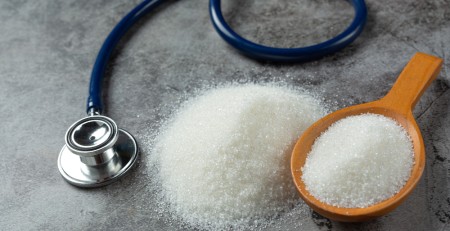These Foods Help You to Poop, Relieve Constipation
advpadmin232022-04-13T16:15:39-04:00Key takeaways:
- Constipation is a common condition that can affect people of all ages. But that doesn’t always make it an easy subject to talk about.
- The foods we eat, especially how much fiber is in them, can impact how often we poop. Drinking water and getting exercise are also important.
- We’re all different, but there are some issues with your pooping schedule that mean you should see a doctor.
Constipation affects about a third of people at any given time. Many things affect how well your gut is working. But the food you eat makes a big difference. Some foods are much better than others for preventing or relieving constipation. Read on to learn more.
What causes constipation?
Constipation is when you don’t poop at least a few times a week. It might be painful or difficult to go to the bathroom. The stool may be hard or lumpy. And you might feel like you haven’t emptied your bowels completely.
In adults, conditions like hypothyroidism, irritable bowel syndrome, and Parkinson’s disease can cause constipation. Hormone changes and pregnancy may also play a role. Even depression and stress can affect bowel movements. Constipation is also a side effect of different medications. But even without these medical conditions or medications, many people still do not have regular bowel movements.
In children, changes in diet, withholding stool, and issues around toilet training are common causes of constipation. But, for both adults and kids, the cause isn’t always clear.
What is a healthy number of bowel movements?
Everyone’s body is different, and that includes how often we need to move our bowels. But a healthy number of bowel movements for adults and children is anywhere from three times a day to three times a week. The stool should be soft, formed, and easy to pass.
What foods help with constipation?
For many of us, changes in habits can help treat constipation or even prevent it. Eating foods that are high in fiber, drinking plenty of fluids, and getting regular exercise can all help. When making our daily choices, it helps to know what kinds of food keep the digestive system active and healthy.
What does fiber do?
There are two types of fiber. Both help you poop. Soluble fiber makes stool softer and easier to pass. Insoluble fiber adds bulk to the stool and moves it efficiently through the intestines. A diet high in fiber has other health benefits, like helping with weight management, controlling blood glucose, and lowering cholesterol. It can also help reduce the risk of colon cancer.
Which foods are high in fiber?
Fiber comes from plants, so for high-fiber foods, think fruits and vegetables, as well as whole grains, nuts and seeds, and beans. Most adults should eat between 22 and 34 g of fiber a day. Let’s look at some ways to get that recommended daily dose:
- Fruits: Fruits like pears, berries, apples, prunes, cherries, and kiwis are good sources of fiber. To get the benefits of both soluble and insoluble fiber, be sure to eat the skin when possible.
- Vegetables: Brussels sprouts, broccoli, artichokes, cauliflower, carrots, and spinach are just a few of the many high-fiber options in this category.
- Legumes: This includes a variety of beans, peas, and lentils. There are lots of different tasty legumes to choose from and plenty of ways to use them.
- Nuts and seeds: Just a handful of almonds, pistachios, pumpkin seeds, or a spoonful of chia seeds or flax seeds can deliver a healthy serving of fiber. Even cocoa beans are in this category, so eating dark chocolate with cacao that is 70% or higher can add to your daily fiber intake.
- Whole grains: You eat some of these foods like brown rice, quinoa, oats, and popcorn whole. You consume others as cereal or flour. To make sure you are getting enough fiber from packaged foods, look at the nutrition label. “Whole grain” should appear in the list of ingredients, not just on the packaging.
There are a couple of additional tips for increasing your fiber intake. First, eat a variety of these foods to get the benefits of soluble and insoluble fiber for your digestive system and overall health. Second, go slowly, and drink plenty of fluids. Revving up your fiber intake too quickly can lead to bloating and gas, especially if your body isn’t used to it.
Why are fluids important?
When your body is even a little dehydrated, your stool can become harder, and your intestines can’t do their job as well. Try to drink 8 to 10 cups (2 to 2.5 L) of fluids every day. Drink mostly water. Small amounts of natural fruit juices like apple, pear, and prune juice can help with constipation, especially in children.
To drink more water throughout the day, try adding a little fruit for flavor. Or try carrying a water bottle with you. Also, serve water at meals, and ask for it if you’re out at a restaurant.
Do probiotics help with regular bowel movements?
Probiotics are foods or supplements that contain live bacteria. These bacteria are part of the normal makeup of a healthy body. Prebiotics are foods that feed healthy bacteria in the gut as they pass through.
The most common groups of bacteria in probiotic foods and supplements are Lactobacillus and Bifidobacterium. Both of these seem to help prevent and relieve constipation. But studies have shown that probiotics with more than one species of bacteria work best. Foods like yogurt and kefir or fermented vegetables, like sauerkraut and kimchi, are great sources of probiotics that you can add to your diet.
Prebiotic foods, which promote the growth of healthy bacteria in the gut, include garlic, seaweed, and chicory root, as well as many other high-fiber foods. These foods help with constipation because of their fiber and the good bacteria that grow because of it.
What are other foods that can make you poop?
Coffee seems to bring on the need to poop in about a third of people. And while it also makes you pee more, it doesn’t seem to cause dehydration if you drink only a few cups a day.
If you don’t like coffee or the way it makes you feel, drinking warm liquids is enough to help some people poop. Try a cup of tea, warm broth, or even a warm cup of water.
The regular use of olive or flaxseed oil seems to relieve constipation for some people. And chewing gum or eating food or candy with sorbitol can make some people poop as well.
When should you seek medical help for constipation?
You can relieve or prevent most constipation with fiber, fluids, and exercise. There are also many over-the-counter and prescription medications for constipation. They work in different ways, so talk to your healthcare provider about what’s best for you. Pregnant people and young children shouldn’t take medications for constipation without talking to a healthcare provider.
Call your healthcare provider if you:
- See blood in your stool
- Have abdominal pain or vomiting
- Notice a sudden or significant change in your regular bowel habits.
Your healthcare provider can help you explore possible causes and offer suggestions for treatment.
The bottom line
Constipation is a common problem that affects most of us at one time or another. The good news is that even small changes in your diet can make a big difference. Look for ways to add some tasty, high-fiber foods to your day, and don’t forget to hydrate. Your gut is just one part of your body that will thank you.
The Unmentionables is a series that focuses on common curiosities about our bodies that, at some point, have been labeled as taboo, shameful, or embarrassing. But these are important questions we all have about our health, and we should be able to ask them. This series aims to dispel the stigma, normalize the discussion, and openly address these important health topics.
Don’t be shy. Someone else has the same question, so ask away!
Order all your OTC products
(Over The Counter Medications)
References
Allen, P., et al. (2021). Pediatric functional constipation. StatPearls.
Anderson, J., et al. (2009). Health benefits of dietary fiber. Nutrition Reviews.
Arce, D., et al. (2002). Evaluation of constipation. American Family Physician.
Arnaud M. J. (2003). Mild dehydration: A risk factor of constipation?. European Journal of Clinical Nutrition.
Bae, S. H. (2014). Diets for constipation. Pediatric Gastroenterology, Hepatology & Nutrition.
Bernstein, M. T., et al. (2014). Gastrointestinal symptoms before and during menses in healthy women. BMC Women’s Health.
Bharucha, A., et al. (2013). American Gastroenterological Association technical review on constipation. Gastroenterology.
Bourrie, B. C. T., et al. (2016). The microbiota and health promoting characteristics of the fermented beverage kefir. Frontiers in Microbiology.
Çalişkan, N., et. al. (2016). The effect of warm water intake on bowel movements in the early postoperative stage of patients having undergone laparoscopic cholecystectomy. Gastroenterology Nursing.
Centers for Disease Control and Prevention. (2021). Fiber: The carb that helps you manage diabetes.
Centers for Disease Control and Prevention. (2021). Food labels.
Centers for Disease Control and Prevention. (2021). Water and healthier drinks.
Chang, Y., et al. (2014). Does stress induce bowel dysfunction? Expert review of Gastroenterology & Hepatology.
Chen L., et al. (2018). Digestibility of sulfated polysaccharide from the brown seaweed Ascophyllum nodosum and its effect on the human gut microbiota in vitro. International Journal of Biological Macromolecules.
Crozier, S. J., et al. (2011). Cacao seeds are a “super fruit”: A comparative analysis of various fruit powders and products. Chemistry Central Journal.
Elkaim, Y. (2013). The 5-step constipation solution. U.S. News & World Report.
Healthychildren.org. (2021). Constipation in children. American Academy of Pediatrics.
Hosseinzadeh, S. T., et al. (2011). Psychological disorders in patients with chronic constipation. Gastroenterology and Hepatology from Bed to Bench.
Katz, D., et al. (2011). Cocoa and chocolate in human health and disease. Antioxidants & Redox Signaling.
Killer, S. C., et al. (2014). No evidence of dehydration with moderate daily coffee intake: A counterbalanced cross-over study in a free-living population. PloS One.
Lever, E. (2014). Systematic review: The effect of prunes on gastrointestinal function. Alimentary Pharmacology and Therapeutics.
Magro, D. O., et al. (2014). Effect of yogurt containing polydextrose, Lactobacillus acidophilus NCFM and Bifidobacterium lactis HN019: A randomized, double-blind, controlled study in chronic constipation. BMC Nutrition Journal.
MedlinePlus. (2020). Constipation: Self-care. National Library of Medicine.
MedlinePlus. (2020). Fiber. National Library of Medicine.
MedlinePlus. (2022). High-fiber foods. National Library of Medicine.
Mueller-Lissner, S. et al. (2011). Constipation in adults. American Family Physician.
National Center for Complementary and Integrative Health. (2019). Probiotics: What you need to know. National Institutes of Health.
National Institute of Diabetes and Digestive and Kidney Diseases. (2018). Definition and facts for constipation. National Institutes of Health.
National Institute of Diabetes and Digestive and Kidney Diseases. (2018). Eating, diet, and nutrition for constipation. National Institutes of Health.
National Institute of Diabetes and Digestive and Kidney Diseases. (2018). Treatment for constipation in children.
Nishimura, M., et al. (2015). Effects of the extract from roasted chicory (Cichorium intybus L.) root containing inulin-type fructans on blood glucose, lipid metabolism, and fecal properties. Journal of Traditional and Complementary Medicine.
Orgeron, R., et al. (2016). Sauerkraut: A probiotic superfood. Functional Foods in Health and Disease.
Park, K. Y., et al. (2014). Health benefits of kimchi (Korean fermented vegetables) as a probiotic food. Journal of Medicinal Food.
Ramos, C. I., et al. (2015). The short-term effects of olive oil and flaxseed oil for the treatment of constipation in hemodialysis patients. Journal of Renal Nutrition.
Roque, M., et al. (2015). Epidemiology and management of constipation in elderly patients. Clinical Interventions in Aging.
Slavin, J. (2013). Fiber and prebiotics: Mechanisms and health benefits. Nutrients.
Tantawy, S. A., et al. (2017). Effects of a proposed physical activity and diet control to manage constipation in middle-aged obese women. Diabetes, Metabolic Syndrome and Obesity: Targets and Therapy.
Trottier, M., et al. (2012). Treating constipation during pregnancy. Canadian Family Physician.
U.S. Department of Agriculture. (2019). Dietary guidelines for Americans.
U.S. Department of Agriculture. (2019). FoodData central.
U.S. Food and Drug Administration. (2021). Interactive Nutrition Facts Label: Fiber.
Walter, S. A., et al. (2010). Assessment of normal bowel habits in the general adult population: The Popcol study. Scandinavian Journal of Gastroenterology.
Zhang, C., et al. (2020). Meta-analysis of randomized controlled trials of the effects of probiotics on functional constipation in adults. Clinical Nutrition.
Zhang, N., et al. (2013). Study on prebiotic effectiveness of neutral garlic fructan in vitro. Food Science and Human Wellness.
Article Written by Anne Jacobson, MD, MPH | Reviewed by Katie E. Golden, MD










